Since my reviews tend to drag too bloody long, it’s time for a summary roundup on Sushi Typhoon’s 7 film set. Each film will be summarized with plusses and minuses, and a short verdict. For reference, I will also hail and bash another 7 movies that the fish factory’s output can be compared to.
Alien vs. Ninja (Seiji Chiba, 2010)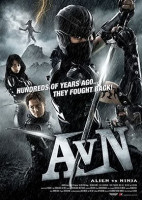
+ Unbeatable concept: aliens + ninjas
+ Old school effects: men in rubber suits
+ Inventive martial arts choreography
– Sometimes unnecessarily underlines its silliness
– Very bland, gray visual look
Verdict: Very enjoyable martial arts / monster movie relying on strong action choreography by Yuji Shinomura, and men in rubber suits (Shimomura again). Occasional winks of eye to the viewer would not have been needed, though – we get the joke even if you don’t spell it out to us! 4/5
Mutant Girls Squad (Nishimura, Iguchi & Sakaguchi, 2010)
+ Excellent score by Kou Nakagawa
+ Charming cameos and kawaii moments
+ Solid storyline set the TGP universe
+ Breathtaking gore and make up effects
– The use of CGI in some gore effects
Verdict: A fun, even cute splatter-comedy hampered by some CGI, but excelling also in handmade gore, interesting storyline/world, and pleasing genre casting. Iguchi’s mid-episode ventures a bit too much into comedy, but the rest retains a fitting level of cool / pseudo seriousness. 3.5/5
Helldriver (Yoshihiro Nishimura, 2010)
+ Set in an ambitious, satiric zombie world
+ Various lovely gore and make-up effects
+ Kick-ass score by Kou Nakagawa
– Misplaced classical bits on the soundtrack
– Extensive use of CGI
– Lacks mean horror, opts for too much humor
Verdict: Messy and partly disappointing (CGI), Nishimura’s zombie film is also very enjoyable, epic trash ride with charming make-up effects and terrific score. Nishimura’s strength in creating a world of its his for his films is again visible here. 3.5/5
Cold Fish (Sion Sono, 2010)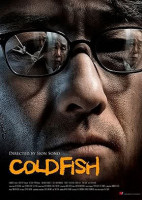
+ Intense, darkly humoristic serial killer film
+ Excellent lead performances
+ All around high quality filmmaking
– Slight over-angst in the very last scene
Verdict: Not as much a “Sushi Typhoon film” as just another excellent Sion Sono thriller that happened to be produced by Sushi Typhoon. Not to be compared with “genre films”, although it does come with a heavy load of blood, guts and nudity. A very serious production, although spiced with very dark humor and Sono’s typical commentary on Japanese society.4/5
Karate Robo Zaborgar (Noboru Iguchi, 2011)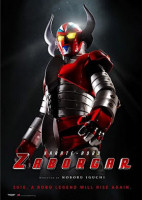
+ Wonderful soundtrack
+ Dynamic action scenes
+ Humor and genre respect balanced
+ Likable characters and actors
– The second half occasionally drags and gives too much emphasis on CGI
Verdict: A highly enjoyable action comedy for big audiences. There is plenty of emphasis on old school, and due to the family friendly and very easy going nature of the film the use of CGI does not become a bother until towards the end. Gore has wisely been omitted. 4/5
Yakuza Weapon (Yudai Yamaguchi & Tak Sakaguchi, 2011)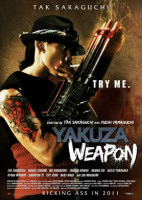
+ Amusing “Sugawara performance” by Sakaguchi
+ Some strong martial arts bits
– Extensive use of CGI in action and gore
– Unnecessarily underlines its silliness and comedy
– Too obvious “made-to-be-a-cult-pleaser” attitude
– Storyline drags in serious parts
Verdict: A disappointing film that chooses to be a comedy and CGI fest rather than hard boiled action film. Sadly, CGI does not equal to true thrills – it only lessens the impact of the action. The dramatic storyline parts also fail – a problem that also plagues Deadball. A disappointment to action fans. 2/5
Deadball (Yudai Yamaguchi, 2011)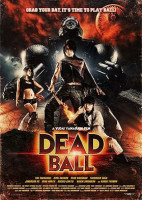
+ Strong, prison flick style opening half
+ John Carpenter esque score
+ Charismatic performance by Sakaguchi
+ Some successfully outrageous, bad-taste humor
– Extensive use of CGI in action and gore
– Disappointing climax without actual “baseball”
– Jokes get less outrageous towards the end
– Storyline drags in serious parts
Verdict: An average splatter comedy that shows promise with mean jokes and solid attitude during its first half, but eventually downgrades into a disappointing and not-so-mean CGI-comedy. Sakaguchi is excellent, however, as a silent, chain-smoking antihero.2.5/5
****************************************************************************
****************************************************************************
For comparison, I have chosen seven other genre films from other studios (but mostly the same filmmakers). The list could be much longer, but I decided to omit films like Samurai Princess (not so great) and Meatball Machine (quite interesting) for no obvious reason.
Gothic & Lolita Psycho (Go Ohara, 2010)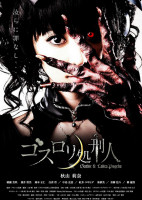
+ Superb opening with stylish action
+ Gothic Lolita makes a great lead
+ CGI free gore
– Made-into-a-cult-pleaser attitude
– Extensive underlining of its silliness
– CGI filled, disappointing finale
– Storyline drags in serious parts
Verdict: A disappointing action comedy that is too afraid to be serious. Action talent is wasted on joking and “we know this is silly” -approach to something that could’ve been very cool and amusing if played with (pseudo) seriousness. 2/5
Hard Revenge Milly: Bloody Battle (Takanori Tsujimoto, 2009)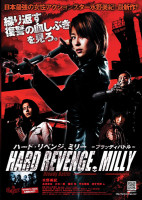
+ Highly stylish, hard boiled cyber punk world
+ Terrific action choreography
+ Excellent, old school gore effects
+ Free of excessive humor and CGI
+ Moody soundtrack
– A couple of flashbacks fail
Verdict: Takanori Tsujimoto shows how to do it right: drop the comedy, invest in action choreography, and set it in visually stylish cyber punk / post apocalypse world. Add moody soundtrack and CG-free gore effects by Nishimura Eizo, and the outcome is: the best Japanese action film in decades! 4.5/5
Robo-Geisha (Noboru Iguchi, 2009)
+ Some crazy ideas come out genuinely fun
+ I’m gloriously misquoted on the Finnish DVD art
– Geisha < High School Girl
– Excessive use of CGI in action and gore
– Family film with gore is a compromise
– Over-acted comedy and non-captivating drama
Verdict: Iguchi is a wonderful guy, but RoboGeisha demonstrates his weaknesses, which are over-reliance on CGI, over-acting, and dramatic scenes which rarely come out successful in a genre film. RoboGeisha does have its share of positively outrageous moments, but the attempt to reach child audiences (with PG-12 rating) yet include gore feels like a compromise from the beginning. 2/5
Vampire Girl vs. Frankenstein Girl (Nishimura & Tomomatsu, 2009)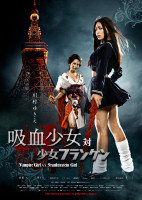
+ Lovely gore effects
+ Hilarious, non-stop pop culture satire
+ Cute and charming “love-comedy-splatter”
+ Terrific, Tarantino-level soundtrack
– Overdone scenes with Dr. Frankenstein
Verdict: Here is a charming love-comedy-splatter that shows how comedy and gore can be married. The film’s heart is a genuinely sweet romance, which is supported by impressive “real” gore and hilarious pop-culture satire that comes frighteningly close to reality. Amazing soundtrack. CG is only used in non-important little additions, and never becomes distracting. 4/5
Tokyo Gore Police (Yoshihiro Nishimura, 2008)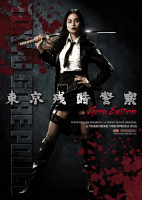
+ Lovely gore effects
+ Dark, humor free vision
+ Satiric commercials
+ Some amazing cyberpunk scenes (Dog Girl)
– Sometimes a bit obvious at pushing the craziness
Verdict: True, mean splatter film that is not afraid to offend those with weaker stomach. CGI is used sparsely, and not in gore. Nishimura’s vision and strong cyber punk wibes add to the experience – the dog girl especially is an amazing creation. I challenge Sushi Typhoon to produce something equally risky and hardcore! 4/5
The Machine Girl (Noboru Iguchi, 2008)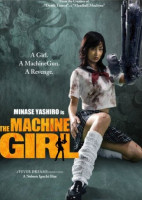
+ Lovely gore effects
+ Good attitude, good ideas
– Editing and sound effects lacks punch
– Action scenes are underwhelming
Verdict: Iguchi’s approach with mean violence and old school effects is admirable. The film’s technical shortcomings (action scenes lack punch, sound effects are underwhelming, editing is sloppy etc.), however, hamper the enjoyment and make it a lesser film compared to the genre’s best movies. Nishimura’s films, for example, manages the technical side better. Iguchi is on the right path here, just needs a tighter skirt! 2.5/5
Death Trance (Yuji Shimomura, 2005)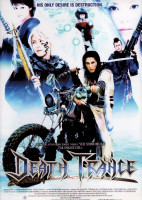
+ Amazing, hard core action choreography
+ Stylish visual design (gothic + punk)
+ Various details (especially in the vampire forest)
+ Humor and CGI only in a small supporting role
+ Badass Tak Sakaguchi performance
– The final fight trades real action for visual feast
Verdict: a hard core martial arts stunner with detailed and interesting gothic/punk word. The lack of gore and toned down posing will disappoint Versus fans, but this film is in fact a Versus beater. Sakaguchi’s best work to date. 4.5/5
















